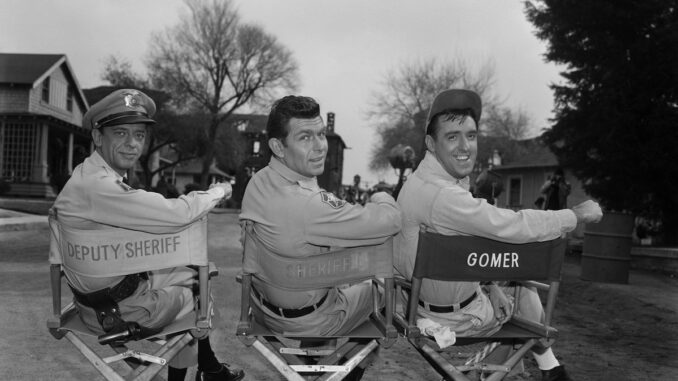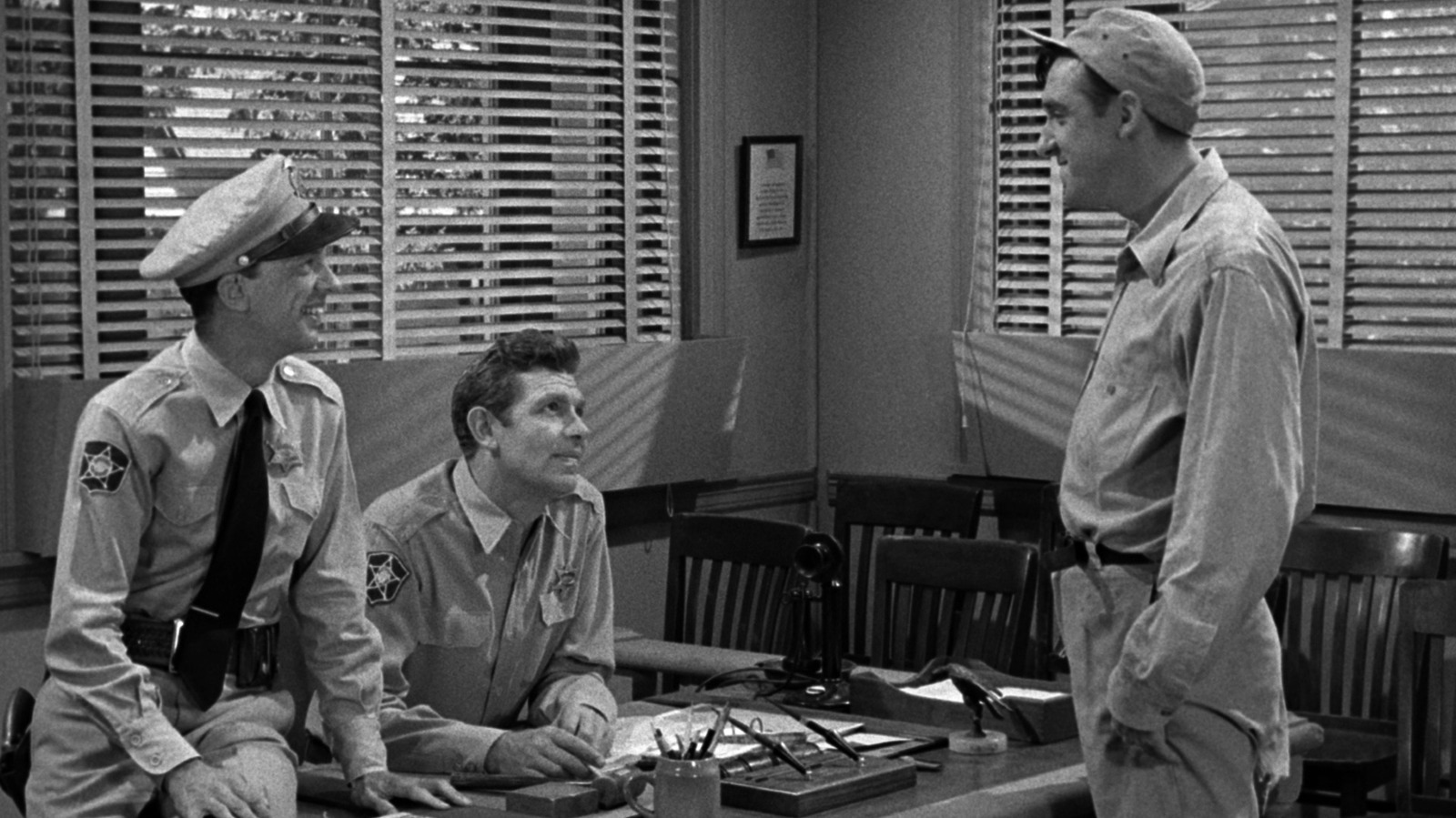
Introduction: What Really Happened to Mayberry?
If you grew up with the warm, easygoing charm of The Andy Griffith Show, you might still wonder why one of TV’s most iconic sitcoms ever came to an end — especially while it was still riding high in ratings. Why would a series with loyal viewers, critical acclaim, and a cultural legacy that defined small-town Americana just… stop?
That’s exactly what we’re unpacking today — the behind-the-scenes reasons The Andy Griffith Show said goodbye to Mayberry. Spoiler: it wasn’t low ratings.
A Show Unlike Any Other: The Magic of Mayberry
The Simplicity That Made It Special
In an era dominated by flashy variety shows and edgy new dramas, The Andy Griffith Show stood out by doing the opposite. It offered peace, patience, and simple values — qualities that resonated deeply with viewers.
Strong Ratings Right to the End
Here’s the kicker: when the show ended in 1968, it was still one of the top-rated programs on television. In fact, it finished its final season at #1 in the Nielsen ratings — one of only three shows in history to do that.
So why pull the plug?
Andy Griffith Wanted Out — Plain and Simple
Burnout Was Real
After eight years as the central figure of Mayberry, Andy Griffith was simply tired. He wanted to return to theater and other projects — not remain tied down to one character forever. He even said in interviews that playing Andy Taylor became too predictable and creatively limiting.
“The Time Felt Right,” Said Andy
Andy once remarked that he never intended for the show to go on forever. In his own words, he said, “I was just ready to move on.” That personal decision carried more weight than any network analytics ever could.
Don Knotts’ Exit Played a Huge Role
The Chemistry Was Never Quite the Same
Don Knotts — aka Barney Fife — was the comedic heartbeat of the show. When he left after Season 5 to pursue film, the dynamic shifted. Even though he returned occasionally, the original magic took a hit.
Knotts Thought the Show Would End Sooner
Here’s the twist: Don left because he thought Andy was ending the show after five seasons. When it continued, he had already signed a movie deal with Universal Pictures. That created a rift the show never quite recovered from.
Changes in TV Trends Were Creeping In
The Rise of Gritty, Modern Storytelling
By the late ’60s, the tide was shifting. Audiences were starting to lean toward more realistic, issue-based programming (All in the Family, MASH*, The Mary Tyler Moore Show). The Andy Griffith Show felt more and more like a relic from another time — wholesome, but increasingly outdated.
Network Executives Were Looking Ahead
CBS was beginning to clear its schedule of “rural” programming in what became known as the “Rural Purge.” Even though The Andy Griffith Show ended before that officially began, you could see the writing on the wall.

The Spin-Off That Carried Mayberry Forward
Enter ‘Mayberry R.F.D.’
The show didn’t really end cold turkey. It transitioned into Mayberry R.F.D., a spin-off that kept the setting but followed new lead characters, including Sam Jones (played by Ken Berry).
Andy Passed the Torch
Griffith appeared in early episodes of R.F.D., but he didn’t stick around long. It was clear the magic of the original cast — Andy, Barney, Aunt Bee, Opie — couldn’t be replicated.
It Was Always About Timing and Integrity
Ending on a High Note
How often do TV shows overstay their welcome? Plenty. But Andy Griffith made the rare move to walk away while he was still winning. He didn’t want the show to decline or drift into mediocrity.
A Rare Legacy of Consistency
Most fans agree: the show didn’t “jump the shark.” It maintained its quality, tone, and heart throughout all eight seasons — a testament to Griffith’s decision to exit on his own terms.
Behind the Scenes — The Crew Was Tired, Too
A Demanding Production Schedule
Back then, TV seasons weren’t short. Each season of The Andy Griffith Show consisted of 30+ episodes, requiring grueling hours and quick turnarounds.
It Took a Toll on Everyone
Writers, directors, and producers began feeling the strain. The cast, too, was ready for a change. It wasn’t just Andy — it was a team decision to close the curtain.
Viewers Didn’t Let Go So Easily
Syndication Kept It Alive
Even after the show ended, The Andy Griffith Show became a syndication juggernaut. For decades, it remained a staple on channels like TV Land and MeTV — ensuring Mayberry never truly disappeared.
The Nostalgia Factor Never Faded
To this day, millions tune in for comfort and nostalgia. It’s a show that makes you feel safe, understood, and quietly entertained. That’s a rare combo.
Mayberry Reflected a Simpler Time
An Antidote to Chaos
During the turbulent 1960s, the world outside was full of protests, war, and rapid change. But inside Mayberry, things stayed calm and slow. That kind of fantasy world eventually became harder to sustain in a rapidly changing culture.
Its Charm Was Timeless — But Time Moved On
Andy knew the show belonged to a certain era. Rather than force it to evolve into something it wasn’t, he chose to end it respectfully.
Other Cast Members Had New Paths
Ron Howard Was Growing Up
Little Opie wasn’t so little anymore. Ron Howard was heading into his teens and later, into filmmaking. Keeping him in the childlike role would’ve felt forced.
Frances Bavier Wanted to Retire
Aunt Bee, played by Frances Bavier, was reportedly growing tired of the grind. She moved away from the spotlight soon after the show ended.
A Strategic, Not Emotional Decision
No Drama, Just a Quiet Goodbye
Unlike many shows that end with scandal or network meddling, The Andy Griffith Show ended on peaceful terms. No blowups. No controversy. Just a choice to preserve its reputation.
Griffith’s Wisdom Echoes Today
Many creators today cite Andy’s decision as a smart example of leaving while you’re ahead — a graceful exit strategy that protected the show’s legacy.
The End Wasn’t the End — Just a Transition
Multiple Cast Reunions Followed
From TV movies like Return to Mayberry to documentary specials and interviews, the legacy continued long after the show’s finale aired in 1968.
It Cemented Andy Griffith’s Place in TV History
Thanks to the show’s iconic status, Andy Griffith’s later roles (like Matlock) always carried a bit of Mayberry with them.
Conclusion — Why It Ended Matters Less Than How It Lasted
Let’s face it: shows come and go. But very few leave a lasting impact like The Andy Griffith Show. The reason it ended wasn’t scandalous — it was wise. Andy Griffith valued integrity over profit, quality over quantity, and storytelling over staying too long.
Mayberry didn’t disappear. It simply went out with the same grace, charm, and quiet dignity it had always shown.
FAQs
1. Why did Andy Griffith really leave the show?
Andy Griffith wanted to explore other creative paths and felt the show had run its course. He also experienced fatigue from playing the same role for nearly a decade.
2. Was the show canceled due to poor ratings?
No. The Andy Griffith Show ended as the number one show in America. It was a voluntary decision, not a cancellation based on performance.
3. Did Don Knotts’ departure hurt the show?
Yes, to some extent. While still successful, the unique comedic chemistry between Andy and Barney was never fully replicated after Knotts left.
4. What was the Rural Purge, and did it affect the show?
The Rural Purge was CBS’s move to cancel rural-themed shows in favor of urban or issue-based programming. Though it didn’t directly affect The Andy Griffith Show, the industry shift was underway.
5. Can you still watch The Andy Griffith Show today?
Absolutely. It’s widely available on streaming platforms and airs regularly on nostalgic networks like MeTV and Pluto TV.
